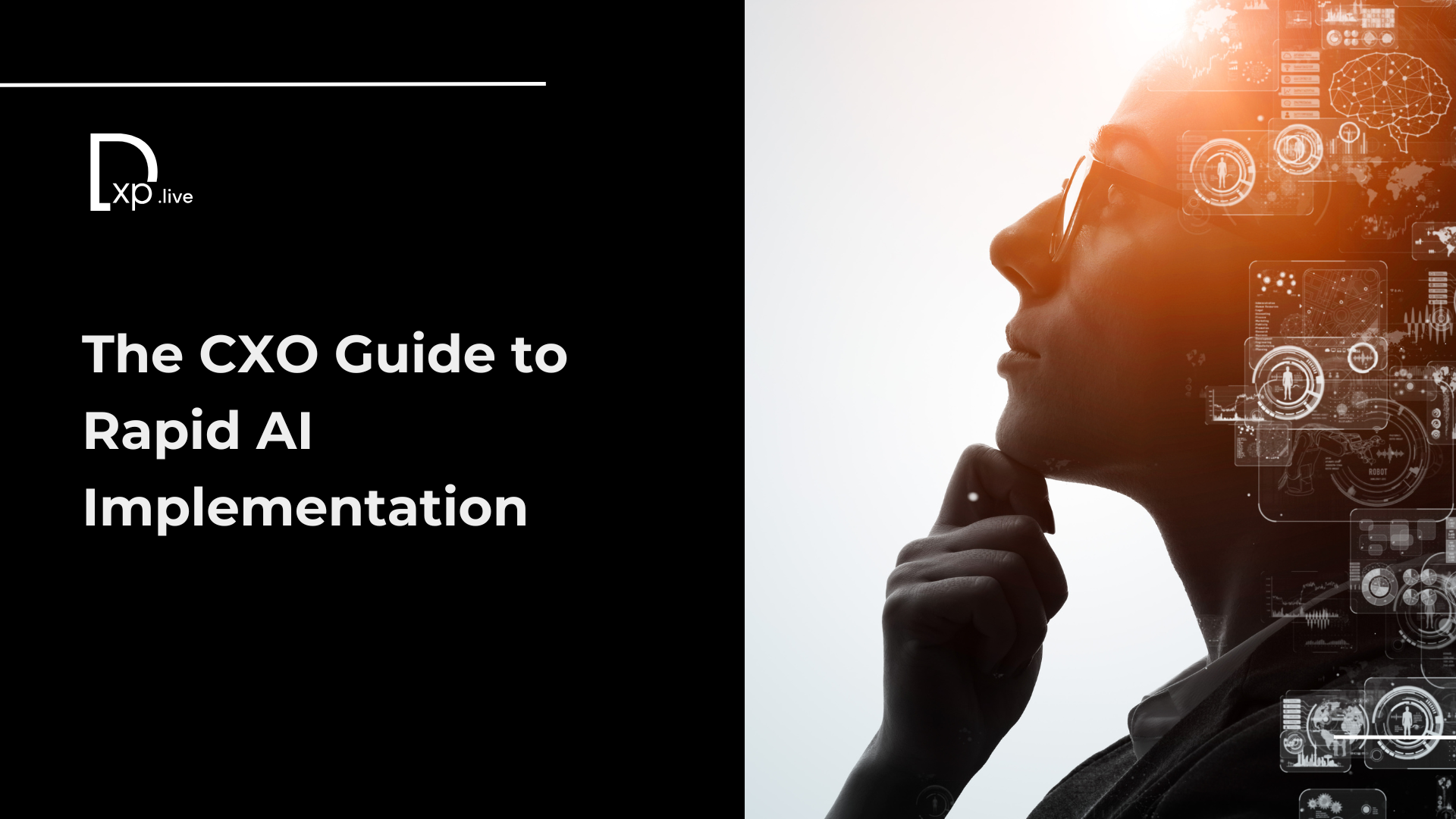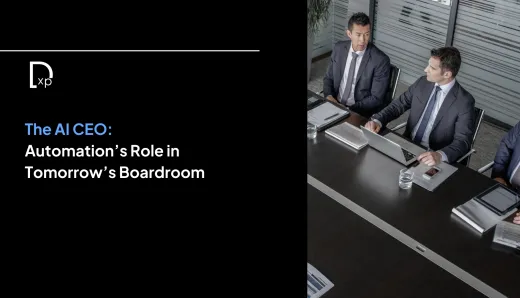The CXO Guide to Rapid AI Implementation

Introduction: Why CXOs Must Lead the AI Revolution
Artificial Intelligence (AI) is no longer a futuristic concept; it’s a business imperative. For CXOs, the challenge is not just understanding AI but implementing it rapidly to drive measurable business outcomes. Whether it’s enhancing decision-making, streamlining operations, or improving customer engagement, AI offers transformative potential. However, the road to successful implementation is fraught with challenges: legacy systems, data silos, skill gaps, and resistance to change.
This guide provides a step-by-step roadmap tailored for CXOs to navigate these challenges and implement AI solutions quickly and effectively.
Step 1: Define Clear Business Objectives for AI
Before diving into implementation, CXOs must identify specific business problems that AI can solve. Avoid the trap of deploying AI for its novelty; instead, focus on areas where it can deliver the most value.
Key Actions:
- Identify pain points in your organization, such as inefficiencies in operations or gaps in customer engagement.
- Align AI initiatives with strategic goals like cost reduction, revenue growth, or enhanced customer experience.
- Prioritize use cases that are achievable within a short timeframe (e.g., predictive analytics for sales forecasting or chatbots for customer support).
Step 2: Build a Data-First Foundation
AI thrives on data. Without clean, well-structured data, even the most advanced algorithms will fail. As a CXO, your role is to champion a data-first culture across the organization.
Key Actions:
- Break down data silos by integrating disparate systems into a unified data platform.
- Invest in data governance to ensure accuracy, security, and compliance.
- Identify gaps in your data and explore external sources if necessary (e.g., market trends or customer sentiment data).
Step 3: Assemble a Cross-Functional AI Task Force
AI implementation isn’t just an IT project—it’s a business transformation initiative. Assemble a cross-functional team that includes representatives from IT, operations, marketing, and customer service.
Key Actions:
- Designate an AI champion within the C-suite to drive alignment and accountability.
- Include team members with diverse expertise—data scientists, business analysts, and domain experts.
- Foster collaboration between technical and non-technical stakeholders to ensure alignment with business objectives.
Step 4: Start Small with Pilot Projects
Rather than attempting a massive overhaul, start with small pilot projects that can be executed quickly and scaled later. This approach minimizes risk while demonstrating value.
Key Actions:
- Select pilot projects with clear success metrics (e.g., reducing customer churn by 10% through predictive analytics).
- Use off-the-shelf AI tools to accelerate deployment rather than building custom solutions from scratch.
- Monitor results closely and use feedback to refine your approach.
Step 5: Leverage Pre-Built AI Solutions
Building AI models from scratch is time-consuming and resource-intensive. Instead, leverage pre-built solutions offered by vendors specializing in your industry.
Key Actions:
- Evaluate vendors based on their track record, scalability, and ease of integration with your existing systems.
- Opt for cloud-based solutions to reduce infrastructure costs and deployment time.
- Negotiate flexible contracts that allow you to scale usage as needed.
Step 6: Address Ethical Considerations Proactively
AI implementation comes with ethical challenges such as bias in algorithms and data privacy concerns. As a CXO, you must ensure that your AI initiatives align with ethical standards and regulatory requirements.
Key Actions:
- Conduct bias audits on your AI models to ensure fairness across demographics.
- Implement robust data privacy measures in compliance with regulations like GDPR or CCPA.
- Create an ethics committee to oversee AI projects and address potential risks proactively.
Step 7: Invest in Skill Development
The success of your AI initiatives depends on having the right talent. Upskilling your workforce ensures that employees can effectively use and manage AI tools.
Key Actions:
- Partner with educational institutions or online learning platforms to offer training programs in AI and machine learning.
- Encourage cross-training between technical teams (e.g., IT) and business units (e.g., marketing).
- Develop an internal knowledge-sharing platform where employees can share best practices and lessons learned.
Step 8: Measure ROI and Scale Strategically
Once your pilot projects demonstrate success, it’s time to scale. However, scaling should be strategic—focused on areas where ROI is clear and measurable.
Key Actions:
- Use key performance indicators (KPIs) such as cost savings, revenue growth, or customer satisfaction scores to measure success.
- Prioritize scaling initiatives that align closely with your strategic goals.
- Continuously monitor performance metrics and adjust strategies as needed.
Real-Life Example: Rapid AI Implementation in Action
Consider a global retail company struggling with high call center volumes during peak seasons. The CXO initiated an AI-powered chatbot pilot project focused on handling FAQs about store hours and return policies. Within three months:
- Call center inquiries dropped by 30%.
- Customer satisfaction scores improved by 15%.
Insights gained from chatbot interactions informed future AI initiatives like personalized product recommendations.
This rapid implementation not only solved an immediate problem but also laid the groundwork for broader AI adoption across the organization.
Conclusion: The Time for Action Is Now
For CXOs looking to stay ahead in today’s competitive landscape, rapid AI implementation is not optional—it’s essential. By following this guide, you can overcome common barriers and unlock the transformative potential of AI for your organization.
Remember:
Start small but think big.
Focus on measurable outcomes.
Build a culture of continuous learning and adaptation.
The future belongs to those who act decisively. As a CXO, the opportunity—and responsibility—to lead this transformation is yours.




